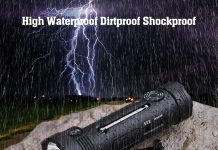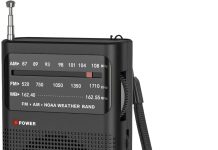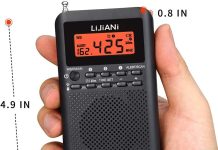In this article, we will explore the fascinating world of emergency weather radios and uncover just how far away they can receive alerts. As we delve into the intricacies of these life-saving devices, we will uncover the technologies and mechanisms that enable them to reach us in our time of need. From the vast open plains to the towering city skyscrapers, join us as we uncover the remarkable capabilities of emergency weather radios and the distances they can extend their reach.
Review contents
How Far Away Can Emergency Weather Radios Receive Alerts?
Background Information
Emergency weather radios are essential devices when it comes to staying informed about potentially dangerous weather conditions. These radios provide real-time alerts and updates from the National Weather Service (NWS), ensuring that individuals can take appropriate action to protect themselves and their loved ones. But how far away can these radios receive alerts? Let’s delve into the factors that can affect their range and explore the different types of emergency weather radios available.
Factors Affecting Range
Several factors can affect the range at which emergency weather radios can receive alerts. These factors include the frequency bands and transmission power used by the radios, the type of radio being used, the presence of repeater stations, the antenna types and placement, and the surrounding environment’s topography.
Frequency Bands and Transmission Power
Emergency weather radios operate in the Very High Frequency (VHF) band, specifically within the 162.400 to 162.550 MHz range. The transmission power of these radios typically ranges from 1 watt to 5 watts. The higher the transmission power, the farther the range at which the alerts can be received. However, it’s important to note that other factors can also influence the effective range of these radios.
Types of Emergency Weather Radios
There are several types of emergency weather radios available, each with its own range capabilities. These include handheld radios, desktop radios, and vehicle-mounted radios. Each type caters to different needs, allowing individuals to choose the best option based on their requirements and the specific situations they may encounter.
Handheld Radios
Handheld emergency weather radios are portable devices that can be easily carried around. These radios are ideal for personal use and are designed to be lightweight and compact. Depending on the specific model, handheld radios can have a range of up to 25 miles in optimal conditions. However, it’s important to consider that this range can be significantly reduced in areas with obstructions such as buildings or dense vegetation.
Desktop Radios
Desktop emergency weather radios are designed for stationary use and are typically placed indoors. They offer a larger coverage range compared to handheld radios, with some models capable of receiving alerts up to 50 miles away. These radios are a popular choice for homes, offices, and small community centers, providing reliable alerts within a specified radius.
Vehicle-Mounted Radios
Vehicle-mounted emergency weather radios are specifically designed for use in vehicles such as cars, trucks, and RVs. These radios are equipped with external antennas that enhance their range capabilities, allowing individuals to receive alerts even when they are on the move. The range of vehicle-mounted radios can vary depending on the specific model and the surrounding environment but generally falls within the 50-mile range.
Weather Radio Repeater Stations
Weather radio repeater stations play a crucial role in extending the range of emergency weather radios. These stations capture and rebroadcast weather alerts, helping to overcome geographic barriers and extend coverage to areas that may be far from the primary transmitter. By strategically placing repeater stations, the coverage range of emergency weather radios can be significantly expanded.
Antenna Types and Placement
The antenna used and its placement can greatly impact the range at which emergency weather radios can receive alerts. The type of antenna, such as a whip antenna or a Yagi antenna, can affect the radio’s ability to capture signals effectively. Additionally, the height and location of the antenna, whether it is indoors or outdoors, and any obstructions in the surrounding area can also impact the range of the radio.
Topography and Surrounding Environment
The topography and surrounding environment play a significant role in determining the effective range of emergency weather radios. Dense forests, mountains, and buildings can obstruct the radio signals, reducing the range at which alerts can be received. Conversely, open plains, bodies of water, and areas with minimal obstructions can allow for greater coverage and reception.
Conclusion
Emergency weather radios provide a vital lifeline during severe weather events, ensuring that individuals receive timely alerts to take appropriate action. While the range at which these radios can receive alerts depends on several factors, including frequency bands, transmission power, type of radio, antenna types, and topography, it’s important to choose a radio that suits your specific needs and the environment in which it will be used. Whether you opt for a handheld, desktop, or vehicle-mounted radio, understanding the factors that affect range will help you make an informed decision and stay safe in the face of inclement weather.



























